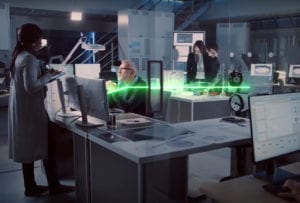I read recently that even though there were 513 outages in the US between 2002 and 2008 (an average of six per month), today only 1 in 20 hospitals (in the U.S.) are prepared for power disruptions. I was a little surprised, since hospitals need extraordinary reliability from their power systems – life support, emergency services, HVAC, communications, records management, and security – especially during power disruptions. Reliability is critical to a hospital’s success and livelihood, not just in terms of patient safety, but in terms of substantial financial exposure.
So what, exactly, is the financial exposure a hospital faces? Primary issues of patient safety aside (and associated liabilities), there is immediate revenue loss from discontinued admissions and services, as well as fixed operating costs (like salaries, utilities, infrastructure costs, and so on) that a hospital pays even when not generating revenue. These costs represent a minimum of 70% of daily revenue. Then there are the subsequent decreases in annual revenues that could range between 5% and 25%. Ultimately, assuming a 5% chance of experiencing an outage – not unreasonable considering the frequency of disruptions – the financial exposure from a power outage lasting one day is about 3.75% of annual revenues.
(Note: To estimate financial exposure (Schneider Electric White paper), enter your annual revenues into this simple equation, where (A) = your average annual revenues: [A / 365) + ((A / 365)*.7) + (.05A)).05= estimated financial exposure to a power outage])
Nearly 4% of annual revenues. From a single event. That’s an attention grabber.
The power outage of August 2003 affected 45 million people in eight US states and 10 million people in parts of Canada. It caused 120 healthcare facilities hundreds of millions of dollars in lost revenue from cancelled services, legal liabilities, and damaged reputations. Within a year, six of these hospitals were in bankruptcy. The financial risk for hospitals is just too great to allow power systems to be a potential problem.
Fortunately it’s entirely possible to optimise a power distribution and back-up generation system in order to support operational efficiency and minimize power event impact on a hospital’s function, reputation, and finances. Any facilities with expansion completed or planned, older equipment and/or manual processes should seriously consider upgrading their power infrastructure. Healthcare facilities are constantly expanding or reconfiguring, and this is an excellent time to consider making capital expenditures in a cohesive power distribution infrastructure.
To build a solid business case, consider consulting services for objective risk assessments on power infrastructure. Other considerations include adding automated solutions for testing and reporting to meet regulatory compliance, robust and redundant backup power generation capabilities, and automated emergency power supply testing schemes (for root cause analysis and development of systematic approaches), UPS installations, and regular proactive and preventative electrical system maintenance.
Another factor to consider is single-vendor expertise. Just like the assessment process, hospitals can benefit greatly from companies that specialize in electrical distribution and energy management. Sourcing all electrical distribution system components from a single supplier helps increase overall reliability and improve supplier responsiveness in case of issues or failures. It also provides facility managers with a experienced personnel to help solve challenges. In the end, reliable power and monitoring systems, along with supporting processes and methodology, boost hospital reputations, and dramatically improve revenue-per-patient and overall profitability.

